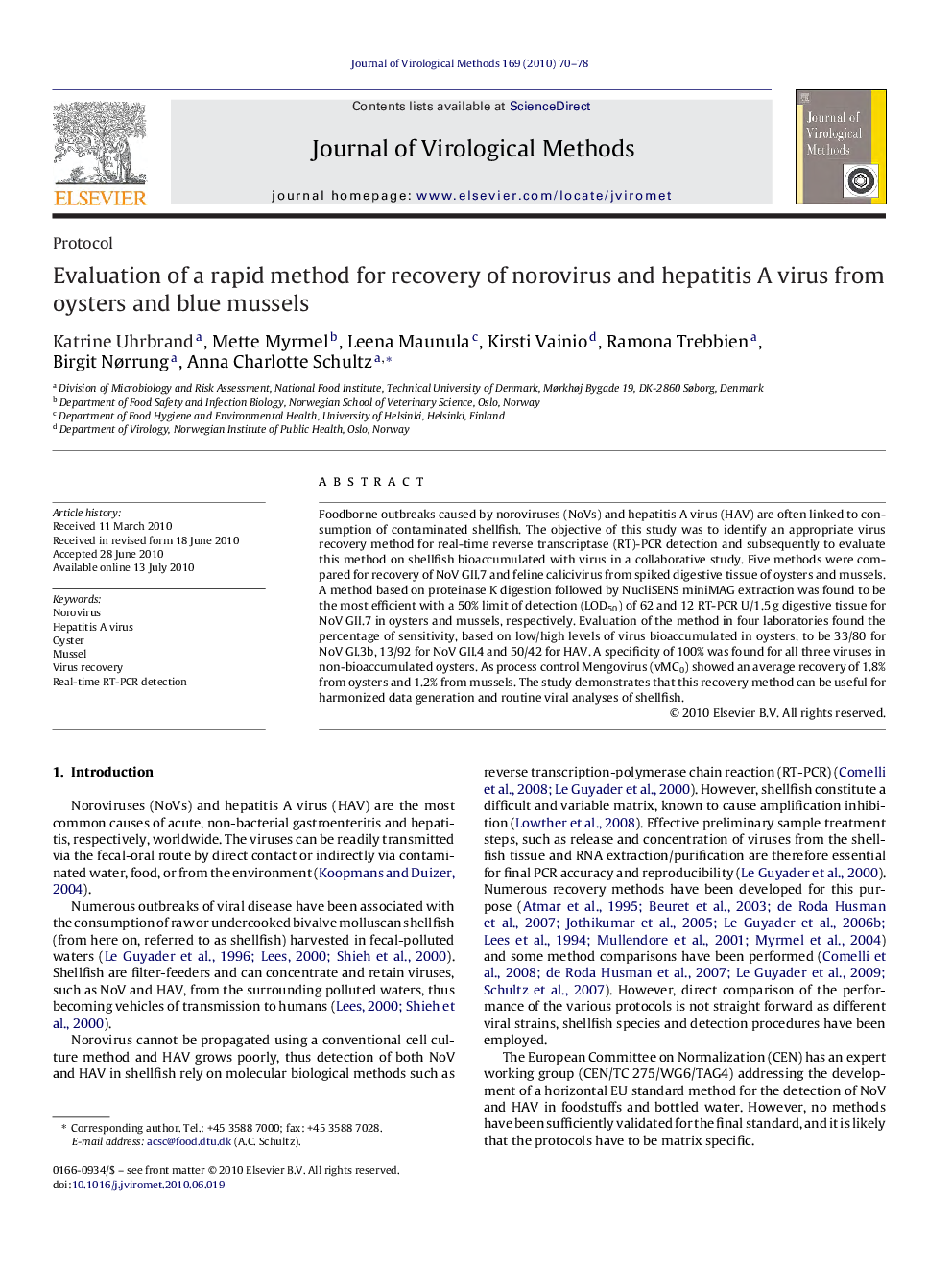| Article ID | Journal | Published Year | Pages | File Type |
|---|---|---|---|---|
| 6135368 | Journal of Virological Methods | 2010 | 9 Pages |
Abstract
Foodborne outbreaks caused by noroviruses (NoVs) and hepatitis A virus (HAV) are often linked to consumption of contaminated shellfish. The objective of this study was to identify an appropriate virus recovery method for real-time reverse transcriptase (RT)-PCR detection and subsequently to evaluate this method on shellfish bioaccumulated with virus in a collaborative study. Five methods were compared for recovery of NoV GII.7 and feline calicivirus from spiked digestive tissue of oysters and mussels. A method based on proteinase K digestion followed by NucliSENS miniMAG extraction was found to be the most efficient with a 50% limit of detection (LOD50) of 62 and 12 RT-PCR U/1.5Â g digestive tissue for NoV GII.7 in oysters and mussels, respectively. Evaluation of the method in four laboratories found the percentage of sensitivity, based on low/high levels of virus bioaccumulated in oysters, to be 33/80 for NoV GI.3b, 13/92 for NoV GII.4 and 50/42 for HAV. A specificity of 100% was found for all three viruses in non-bioaccumulated oysters. As process control Mengovirus (vMC0) showed an average recovery of 1.8% from oysters and 1.2% from mussels. The study demonstrates that this recovery method can be useful for harmonized data generation and routine viral analyses of shellfish.
Related Topics
Life Sciences
Immunology and Microbiology
Virology
Authors
Katrine Uhrbrand, Mette Myrmel, Leena Maunula, Kirsti Vainio, Ramona Trebbien, Birgit Nørrung, Anna Charlotte Schultz,
